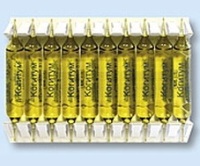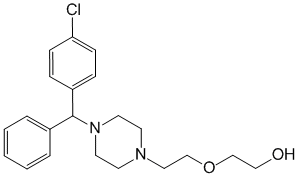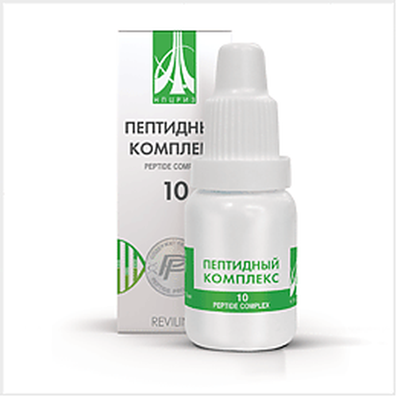Gliatilin - instructions for use (adults and children), analogs, reviews
28 Dec 2016
Gliatilin - instructions for use (adults and children), analogs, reviews
Gliatilin represents itself as a nootropic drug that improves human cognitive abilities (memory, attention and productivity of thought), as well as normalize cerebral circulation. Gliatilin is used in stroke, memory loss, lack of cerebral circulation (vascular encephalopathy) and dementia (senile, Alzheimer's, etc.).
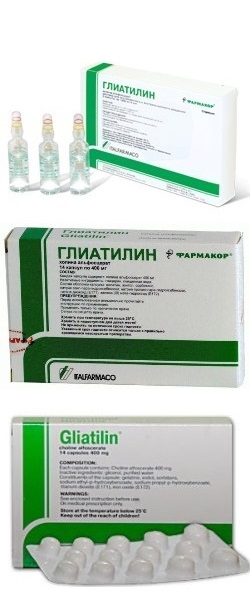
Structure and Composition of Gliatilin
Currently Gliatilin available in two dosage forms:
1. Capsules for oral administration;
2. The solution in vials for intramuscular or intravenous administration.
Capsules colloquially often called pills, meaning dosage form intended for oral administration. Of course, the capsule - is not the same dosage form tablets, but on the everyday level to indicate the drug varieties for intake may well be used both names. It is necessary to remember that if a person says "Gliatilin pills," he is referring to a form for oral administration, ie the capsule.
Gliatilin capsules are available in packs of 14 pieces. The solution for intravenous and intramuscular injection is available in ampoules of 4 ml, which are packaged in cartons of 1 or 3 pieces. Gliatilin solution is a clear, colorless liquid with no odor. Shell gelatin capsules have an oval shape, colored in yellow. Inside the capsule is a viscous, colorless solution.

The active substance of Gliatilin capsules and Gliatilin injection is choline alfoscerate. The capsules have a dosage of 400 mg of the active substance and the solution - 250 mg / ml. That is, each capsule contains 400 mg of choline alfoscerate, and 1 ml of solution for injections - 250 mg. Accordingly, a full ampoule with 4 ml of solution contains 1000 mg of active substance (choline alfoscerate).
As an adjuvant injection comprises a sterile deionized distilled water. Capsules Gliatilin as auxiliary components include the following substances: Glycerine; Titanium dioxide; Gelatin; metahydroxide iron (III); Purified water; Sodium Propyl; Sorbitans; sodium ethyl parahydroxybenzoate; Ezitol.
Therapeutic action of Gliatilin
Gliatilin is a central cholinomimetic actions, that is, has an activating effect on the cholinergic receptors in the brain structures. According to the pharmacological action of the drug it is a nootropic and neuroprotective.
Once in the brain, Gliatilin decomposes with the release of choline and glycerophosphate. Choline is involved in the formation of acetylcholine - a substance which is the main mediator of nervous excitement. It is due to acetylcholine signal transmitted from one brain cell to another. In fact, the availability of sufficient quantities of acetylcholine defines high-speed exchange of information between the brain structures.
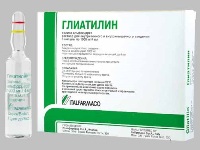
A glycerophosphate involved in the formation of phospholipids - substances constituting the cell membrane. Accordingly, a sufficient amount of phospholipids, cells have a strong membrane that protects them from the negative effects of environmental factors.
Thus, on the one hand, Gliatilin accelerates and improves the transmission of nerve impulses between brain cells, and on the other makes neurons more durable and resistant to adverse environmental factors (eg, hypoxia, etc.).
In addition, Gliatilin improves cerebral blood circulation, accelerates metabolism in brain cells and restores consciousness after traumatic injuries of various brain structures. When used in the acute period of craniocerebral trauma Gliatilin improves blood flow and electrical activity in the affected area, as well as promotes a more rapid disappearance of neurological symptoms and recovery of normal consciousness. Gliatilin also contributes to the rapid recovery and normalization of the structures damaged in the course of ischemic stroke brain.
Gliatilin also improves cognitive abilities (memory, attention and thinking) in people with mild to severe dementia, caused by disorders of cerebral circulation of various origins, such as atherosclerosis, cerebral blood vessels, circulatory encephalopathy, hypertension, Alzheimer's disease, etc.
All people (both healthy and suffering from disorders of mental activity) Gliatilin improves mood and emotional stability, stimulates thinking, relieves irritability and apathy.
Indications for Gliatilin
Gliatilin indicated for use under the following conditions and diseases:
- acute period of traumatic brain injury, in which mostly struck by the brain stem, and there is a corresponding symptoms (disturbance of consciousness, coma, etc.);
- Acute and rehabilitation period of ischemic stroke; The recovery period of hemorrhagic stroke;
- Degenerative and involution psycho-organic syndrome, manifested memory impairment, confusion, disorientation, decreased motivation, initiative and concentration;
- Chronic cerebrovascular insufficiency (encephalopathy);
- Violations of emotional stability and behavior, such as emotional lability, irritability, low interest in life, senile pseudo-melancholy;
- Dementia is caused by various reasons (Alzheimer's, senile, mixed forms);
- Alzheimer's disease;
- Huntington's Chorea;
- Cognitive disorders (disorders of mental function, memory and concentration in the elderly, as well as confusion, disorientation, decreased motivation and initiative).
Gliatilin - instructions for use
General provisions
Gliatilin capsules are taken orally and is used to treat chronic conditions for a long period of time. Gliatilin solution was administered intravenously or intramuscularly and used in the treatment of acute conditions in a relatively short period of time. Furthermore, severe disease gliatilin combined use of injection and in the form of capsules, i.e., first administered intravenously or intramuscularly solution, and then continue to receive treatment with the capsules inside.
Selecting the way to use gliatilin performed by a doctor depending on the severity of the disease and the patient's condition. Consider the scheme, rules of application and the dosage of solution and gliatilin capsules for the treatment of various conditions and diseases.
Application of Gliatilin capsulesThe capsules should be swallowed whole, not open, not revealing in other ways, and with a small amount of still water. It is better to take the capsules before meal.
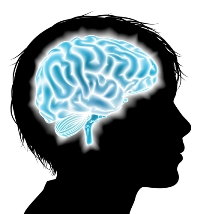
If you want to take the capsules several times a day, you should divide the daily dosage into unequal parts so that in the morning to take a large part of the dose, and during the day - less. This is necessary to offset the possible stimulating effect of the drug, due to which you may have difficulty falling asleep, if we take it in the evening.
When chronic treatment immediately begin taking the capsules with 400 mg (1 capsule) in 2 - 3 times a day and continued for 3 - 6 months. In acute conditions initially carried gliatilin course of injections (administered one ampoule - 1000 mg per day), then immediately, without interruptions go to the reception of the drug in the form of capsules (2 capsules in the morning and one in the afternoon), which continued for six months.
Consider the dosage and duration of treatment of various chronic conditions Gliatilin capsules:
- The period of rehabilitation after a stroke - taken orally at 400 mg (1 capsule) 2 times a day, for two months.
- The early recovery period after a stroke - taken orally at 400 mg (1 capsule) 2 times a day for 2 months starting from the second week after stroke.
- The profound disturbances of movement, thought, speech and mental activity after a stroke - taken orally at 400 mg (1 capsule) 2 times a day, for six months. Start the capsules can be in the second week after suffering a stroke.
- Dementia (dementia), Alzheimer's disease and encephalopathy disease (cerebrovascular accidents) with severe motor and intellectual function - first for 5 - 14 days Gliatilin administered by injection (one ampoule 2 times a day), and then take six months inside of 400 mg (1 capsule) 2 times per day.
- Cerebrovascular accidents (encephalopathy, chronic cerebrovascular insufficiency, and others.) - Taken orally at 400 mg (1 capsule) 2 times a day for 1 - 2 months.
- Brain contusion or polytrauma (damage to various parts of the body) - within a week of the injury Gliatilin administered by injection (1 ampoule 1 time per day), then from the second week are inside of 400 mg (1 capsule) 2 times a day, within 2 months.
- Concussion - taken orally on the first day of injury 400 mg (1 capsule) 2 times a day, for a month.
- Traumatic brain injury in children - within a week of the injury Gliatilin administered by injection (1 ampoule 1 time per day), then from the second week are inside of 400 mg (1 capsule) 2 times a day for 2 months.
If the intake of capsules in humans gliatilin nausea, it is necessary to reduce the dosage of the drug and continue treatment.
These patterns of Gliatilin use are standard, but you can increase or decrease the duration of treatment, if necessary. Also, if necessary, can be carried out repeated courses of the capsules gliatilin, maintaining between intervals of at least 4 - 6 months. Remember, the longer course of therapy was - the longer should be adjourned until the next.
Injections gliatilin
The solution can be administered intravenously or intramuscularly. Gliatilin administered intravenously as an infusion ( "emitter"), the contents of the ampoule pre-diluted (4 ml) in 50 ml of saline. The finished infusion solution is introduced at a rate of 60 - 80 drops per minute.
To perform an intramuscular injection solution from the ampoule gliatilin drawn into a sterile syringe the required volume. For example, to enter the 1000 mg formulation, the syringe takes 4 - 5 ml, to select all of the solution from the vial. If it is necessary to enter only 500 mg of the drug, it takes a 2 ml syringe, ampoule to choose from only 2 ml of a solution which contained 500 mg and gliatilin.
Intramuscular injection is recommended to do in the anterior-lateral surface of the thigh, the upper outer part of the shoulder and lean people in the front abdominal wall. Not recommended intramuscular injection in the buttocks, as in this area of the body muscles lie very deep and there is a risk to introduce the solution into the subcutaneous fat layer, where the medicine will not suck the blood at a sufficient rate.
Before performing the injections necessary to process the injection site with a cotton swab dipped in antiseptic (alcohol Belasepte, chlorhexidine, etc.). Thereafter, the needle is introduced deeply into the tissue, keeping perpendicular to the skin surface. When the needle hub from the skin to remain 2 - 4 mm, needle insertion into tissue stop and start to press the plunger slowly releasing medication into the muscle. After entering all the solution into the tissue, the needle is removed, and the injection site again wiped with a cotton swab moistened with disinfectant.
The vial with the solution gliatilin should be opened immediately before use. Do not store the solution in the opened container. That is, if the ampoule has been opened, it is necessary to use either a solution or discarded. If not all of the ampoule is used for injection, the syringe gaining desired amount of solution and the remainder discarded.
Gliatilin dosage for intravenous or intramuscular injection in various diseases and the same is 1000 mg (one full ampule solution - 4 ml) at a time. Intramuscular injections were with a maximum of once per day, and intravenous - 1 - 3 times. The duration of intravenous or intramuscular injection in various diseases and also the same is 7 - 10 days. After completion of the injection rate can gliatilin immediately without interruption some other drug, move to the drug in capsules of 400 mg (1 capsule) 2 times a day for 1 - 6 months, to achieve a lasting therapeutic effect.
Injections of Gliatilin to produce better in the first half of the day, preferably before meals. The method of drug administration is determined by a physician and depends on the patient's condition. If a man is in critical condition, unconscious or unable to walk independently, it Gliatilin administered intravenously. If a person is able to walk and to adequately respond to the surrounding reality, the Gliatilin can be administered intramuscularly. However, if it is possible, it is best to apply the intravenous infusion of the drug, since this method of injection less traumatic compared with intramuscular injections.
Consider the dosage and duration of injection gliatilin a variety of conditions and diseases:
- Acute ischemic stroke - administered intravenously or intramuscularly to 1,000 mg (1 ampoule) 2 times a day for 3 - 5 days. From the second week after a stroke can start taking the capsules of 400 mg (1 capsule) 2 times a day, for a month.
- Acute period of hemorrhagic stroke - administered intravenously or intramuscularly to 1000 mg (1 ampoule) 2 times a day, for 5 - 14 days. From the second week after a stroke can start taking the capsules of 400 mg (1 capsule) 2 times a day, for a month.
- Stroke with disorder of consciousness, requiring the maintenance of vital functions - administered intravenously at 1000 mg (1 ampoule) 4 times a day at regular intervals lasting 6 hours, within 5 - 7 days.
- Dementia (dementia), Alzheimer's disease and encephalopathy (cerebrovascular accidents) with severe motor and intellectual function - within 5 - 14 days Gliatilin administered intravenously or intramuscularly in one ampoule (1,000 mg) 2 times a day, and then six months ingest 400 mg (1 capsule) 2 times per day.
- Bruising of the brain with the disorder of consciousness, requiring the maintenance of vital functions - administered intravenously at 1000 mg (1 ampoule) 4 times a day at regular intervals lasting 6 hours, within 5 - 7 days.
- Brain contusion moderate or mild, or polytrauma (trauma of several parts of the body) - administered intravenously or intramuscularly to 1,000 mg (1 ampoule) once a day for 7 days, starting from the first day of injury. Starting from the second week after the treatment of injury to continue receiving capsule 400 mg (1 capsule) 2 times a day for two months.
- Traumatic brain injury in children - be administered intravenously or intramuscularly to 1,000 mg (1 ampoule) once a day for 7 days, starting from the first day of injury. Starting from the second week after the treatment of injury to continue receiving capsule 400 mg (1 capsule) 2 times a day for two months.
- Heart disease or surgery, which can be complicated by the development of ischemic brain damage - administered intravenously or intramuscularly to 1,000 mg (1 ampoule) once a day for 3 - 7 days. The signal for introducing gliatilin in such cases is the development of the phenomenon of cardiac embolism or systemic hypotension. You can enter Gliatilin in the early postoperative period or prior to surgery to prevent complications in the form of ischemic brain damage (if there is a risk of developing such complications).
After completion of the course gliatilin injection for more persistent or significant therapeutic effect is always possible to continue treatment with taking the capsules. Capsules for various conditions and diseases to take the same dose - 400 mg (1 capsule) by two times a day for 1 - 6 months. If the condition is severe, it is permissible to take 800 mg (2 capsules) in the morning and 400 mg (1 capsule) during the day, for a month. If necessary, continue treatment after a month gliatilin receiving a daily dosage of 1200 mg (2 capsules in the morning and one in the afternoon), and the dose should be reduced by taking 400 mg (1 capsule) by two times a day for an additional 1 - 5 months. If the background of the person injecting gliatilin nausea, it is necessary to reduce the dosage of the drug and continue therapy.
Gliatilin during Pregnancy and breastfeeding
The Gliatilin drug is contraindicated during pregnancy and breastfeeding. However, if the woman is not aware of the occurrence of pregnancy, drug taking, it is not necessary to have an abortion, because animal experiments have gliatilin showed no adverse effects on the fetus. In this case, you just need to stop taking the drug immediately after it became aware of the pregnancy, and carefully do screening tests (ultrasound at 12 and 20 weeks, the concentration of the AFP test, etc.) to detect abnormalities in the developing fetus.
If a woman breast-feeding, you should take Gliatilin, the child should be converted to artificial milk formula and abandon breastfeeding.
Effects on ability to drive mechanisms
Gliatilin does not reduce the ability to control mechanisms, so the background of the drug can be engaged in any activities that require high-speed reaction and concentration.
Overdose of Gliatilin
Overdosing is possible and is shown gliatilin development of nausea, vomiting, and dyspepsia symptoms (bloating, flatulence, sensation of heaviness in the stomach, belching, diarrhea or constipation, etc.). In case of overdose it is recommended to wash out the stomach and then take a sorbent (eg activated carbon, Polisorb, Polyphepan, Filtrum, Enterosgel, etc.). Upon receipt of the sorbent needed during the day to refrain from using the drug, and then you can continue receiving gliatilin standard dosage.
Interaction with other drugs
Gliatilin not significantly interact with other drugs and therefore it can be used in combination with any other drugs.
Gliatilin for ChildrenGeneral information
Gliatilin, like other nootropics, often prescribed to young children to eliminate delays of motor, mental and speech development, and to eliminate the effects of birth trauma and perinatal encephalopathy. In more rare cases, the drug is used for the treatment of traumatic brain injury, concussion or brain injury. Children under the age of 7 years Gliatilin usually administered by injection as a solution using a necessary measure can be smaller than the dosage for adults. When using capsules a child of any age will have to give a full adult dose, because its contents are divided into several doses possible.
Gliatilin - instructions on the use of children
In various embodiments, the delays of motor, mental and speech development, perinatal encephalopathy, or the consequences of birth trauma in children of any age Gliatilin better to use in the form of intramuscular injections for several reasons. Firstly, when using a solution may be required to measure the child dosage. Second, the course of therapy injections gliatilin much shorter than when the reception tablets (so doing injections for 5 - 14 days, and drink capsules 1 - 3 months). Finally, thirdly, gliatilin injections are often much more effective than taking the capsules.
At a delay of development, the consequences of a birth trauma or perinatal encephalopathy children first year of life is administered by intramuscular injection of 1 - 2 ml solution (250 - 500 mg) gliatilin once a day for 10 - 12 days. Children aged 1 - 3 years solution was added 2 - 3 ml once a day for 10 - 12 days. A children above 3 years in adults Gliatilin dosages administered, ie, one full vial (4 ml) once a day for 10 - 12 days.
At a delay of development, the consequences of birth trauma and perinatal encephalopathy drug can be used for children and capsules. If the child is older than one year can easily swallow a whole capsule gliatilin, you should give him the drug of 400 mg (1 capsule) 2 times daily for 1 - 3 months. If the child is older than one year can not swallow the capsule, you should carefully pierce her skin needle and dial the contents of the syringe. Then all the liquid contents drawn from the capsule with a syringe, should pour into the child's mouth (after separating the needle from the syringe) and give it a non-carbonated water for drinking.
Under the same conditions of children under a year it is highly recommended to use gliatilin injection rather than capsules. However, if for any reason you have to give up the child, the preparation in the form of capsules, it is recommended to do as follows. First, the puncture needle impaled on the syringe to pull the capsule and its contents. Then, by removing the needle, gently pull the lower lip of the child and in the space between the lip and gums to drip from the syringe 4 - 6 drops of the solution, the drawn out of the capsule. Then you need to give the baby to drink. Thus the child is given preparation of 4 - 6 drops to 2 times a day for 1 - 3 months.
With traumatic brain injury, concussion or brain injury is recommended to be administered intravenously or intramuscularly Gliatilin 1000 mg (1 ampoule) once a day for 7 days, starting from the first day of injury. Starting from the second week after the injury can continue treatment taking capsules of 400 mg (1 capsule) 2 times a day, for two months.
Side effects of Gliatilin
Gliatilin usually well tolerated, and only rarely provokes the following side effects: Nausea; Allergic reactions.
When the nausea should reduce the dose gliatilin and continue taking until the end of therapy. With the development of allergic reactions need to stop taking the drug and consult a doctor.
Analogs of Gliatilin
There are analogues, which are divided into two species on the pharmaceutical market of almost every drug - synonyms and, in fact, analogs. Synonyms are drugs that, like Gliatilin, as the active substance contains choline alfoscerate. Analogues are drugs that contain other active ingredients, but they have a similar maximum gliatilin spectrum of therapeutic action.
So synonymous of Gliatilin are the following drugs: Gleatser injection; Deletions capsules, Oral solution, and the solution for injection; Nooholin Rompharm injection; Choline alfoscerate injection; Holitilin capsules and injection; Cerepro capsules and injection; Cereton capsule and injection.
Analogues gliatilin are other drugs of nootropics groups such as: Amilonosar tablets and solution for injection; Lucidril tablets; Bravinton concentrate for solution for infusion; Vinpotropil capsules, tablets and concentrate for solution for infusion; Vinpocetine tablets and concentrate for solution for infusion; Vinpocetine Forte tablets; Vintsetin tablets; Ginkgo biloba tablets and capsules; Ginkoum capsule; Glycine tablets for sublingual and buccal; Gopantam tablets; Demanol oral solution; Idebenone capsules and tablets; Cavintonum tablets and concentrate for solution for infusion; Cavintonum Forte and Cavintonum Comfort, tablets; Gopantenat Calcium tablets; Karnitex capsule; Karnicetin capsule; Cogitum oral solution; Combitropil capsule; Corsavin and Corsavin Forte tablets; Cortexin lyophilisates for solution for injection; Lucet tablets and injection; Memotropil tablets; Minis nasal drops; Neypilept injection; Neyromet capsule; Noben capsule; Hook the capsule; Nooklerin oral solution; Noopept tablets; Nootropil capsules, tablets and injectable solution; Omaron tablets; Pantogam syrup and tablets; Pantogam capsule asset; Pantokalcin tablets; Picamilon tablets and injection; Pikanoil tablets; Picogam tablets; Pineamin lyophilisates for solution for injection; Piracezin capsule; Piracetam capsules, tablets, granules for syrup for children, and the solution for injection; Piriditol tablets; Semax nasal drops; Telektol tablets; Tiocetam tablets and injection; Phezam capsule; Fenotropil tablets; Celestab capsule; Cellex solution for subcutaneous injection; Ceraxon oral solution for injection; Cerebrolisat injection; Cerebrolysin injection; Encephabol tablets and oral suspension; Epithalamin powder for solution for injection; Eskotropil solution for infusion.
Cheap analogues gliatilin cheaper drugs-synonyms gliatilin are: Gleatser injection; Nooholin Rompharm injection; Cerepro capsules and injection; Cereton capsule and injection.
Cheaper drugs, analogs gliatilin are: Vinpotropil capsules, tablets and concentrate for solution for infusion; Vinpocetine tablets and concentrate for solution for infusion; Ginkgo biloba tablets and capsules; Glycine tablets for sublingual and buccal; Gopantam tablets; Cavintonum tablets and concentrate for solution for infusion; Gopantenat Calcium tablets; Corsavin and Corsavin Forte tablets; Lutset tablets and injection; Memotropil tablets; Noben capsule; Nooklerin oral solution; Noopept tablets; Nootropil capsules, tablets and injectable solution; Omaron tablets; Pikamilon tablets and injection; Pikogam tablets; Piracetam capsules, tablets, granules for syrup for children, and the solution for injection; Telektol tablets; Tiocetam tablets and injection; Phezam capsule.
Better than gliatilin
In medical practice, there is no concept of the "best" or "better" in relation to drugs. Instead, doctors use the term "optimal". Under optimal drug understand that the person best suited and gives the most pronounced therapeutic effects in real time. This means that one person will be optimal Gliatilin, for another - Pantokalcin, and for the third - Encephabol etc. Moreover, for the same person at different times may have different optimum preparations, for example, two years ago it was Gliatilin, and now - Pantokalcin. But it is the best drug is best for a person. Given the very wide variability in optimal drugs as defined by the individual characteristics of the organism, to determine a drug that is better for all people gliatilin not possible.
Gliatilin Reviews
Reviews gliatilin in most cases are positive, as the drug provides a pronounced therapeutic effect. For example, in a review of people who took the drug for improvement of cognitive abilities on the background of a busy schedule, it is noted that Gliatilin normalize state regained vigor and high performance, improved memory, attention and productivity of thought, so that even the hard and long work is not exhausting, and the head end of the day remained bright and "good to think."
People who took the drug to eliminate the consequences of stroke or traumatic brain injury, as well as for improving cognitive abilities (memory, attention and thinking), regressed against various diseases (eg, senile degenerative changes in the brain tissue, cerebral circulatory insufficiency, etc. .), point out that Gliatilin improved their condition and state of health.
So, the increased stroke volume movements on the side of paralysis, improve memory and attention, thinking becomes more even, not torn, etc. People who have had a head injury, the drug to normalize consciousness, managed to remove the headaches and dizziness. But in people suffering from various diseases, provoking deterioration of cognitive abilities, Gliatilin significantly improves concentration, long-term and short-term memory, thinking and doing more productive and not torn.
Negative reviews about gliatilin bit, and in most cases they are due to the development of allergic reactions or severe tolerability of the drug. Furthermore, many people in the review indicate that injections given apparent therapeutic effect after administration of capsules and does not feel any positive changes. In this regard, the review often concluded that better use gliatilin injection and capsule to take it is not necessary due to the lack of therapeutic effect.
Gliatilin - reviews for children
More than 2/3 (70 - 78%) reviews the application gliatilin children are positive, due to the good therapeutic effect of the drug in the treatment of developmental delay. For example, in a review indicates that after a course of application gliatilin children started to speak better, increased vocabulary, improved pronunciation of words appear longer and lucid phrases or sentences in the speech, etc. As other reviews stated that Gliatilin literally gave impetus to the development of the baby, who, after a course of therapy began to sit up, roll over, crawl, stand up on its feet, walking, etc. Since Gliatilin most commonly used to treat delayed child development, and reviews of preparation relate almost exclusively of this aspect. Reviews on the application gliatilin in children for the treatment of traumatic brain injury, brain injury, etc. -. No.
Negative reviews about gliatilin for children due to a number of factors. First, the negative reviews left by parents whose children are poorly tolerated drug, grew during the reception restless, constantly crying, complaining of a headache, etc. Second, the negative reviews are left by parents who have not received from gliatilin the expected therapeutic effect.
In addition, there are negative reviews about it gliatilin capsules. In such a review, parents indicate that injections course provides significant and visible effect, and after receiving the capsule did not have any noticeable changes.

 Cart
Cart

